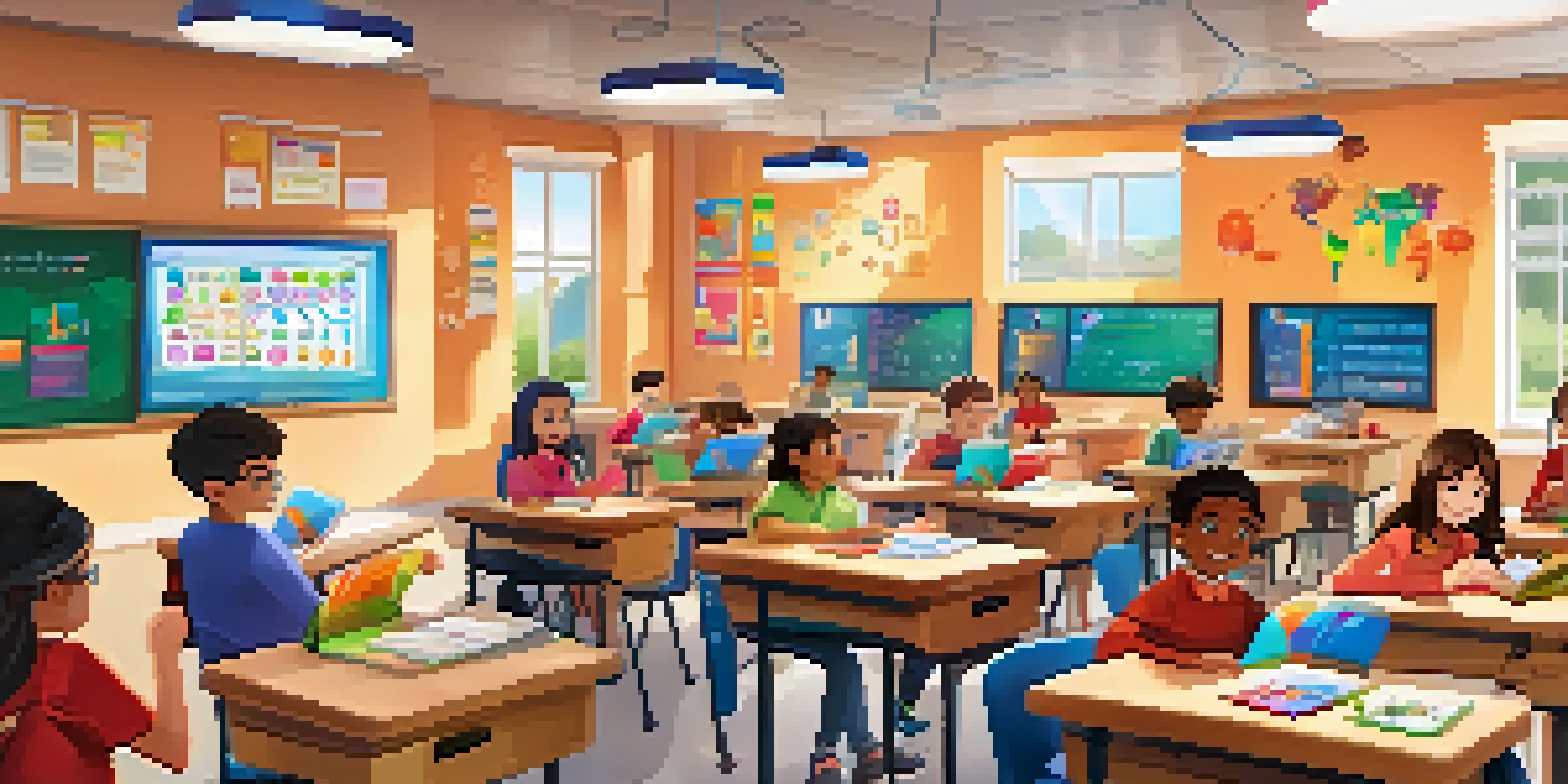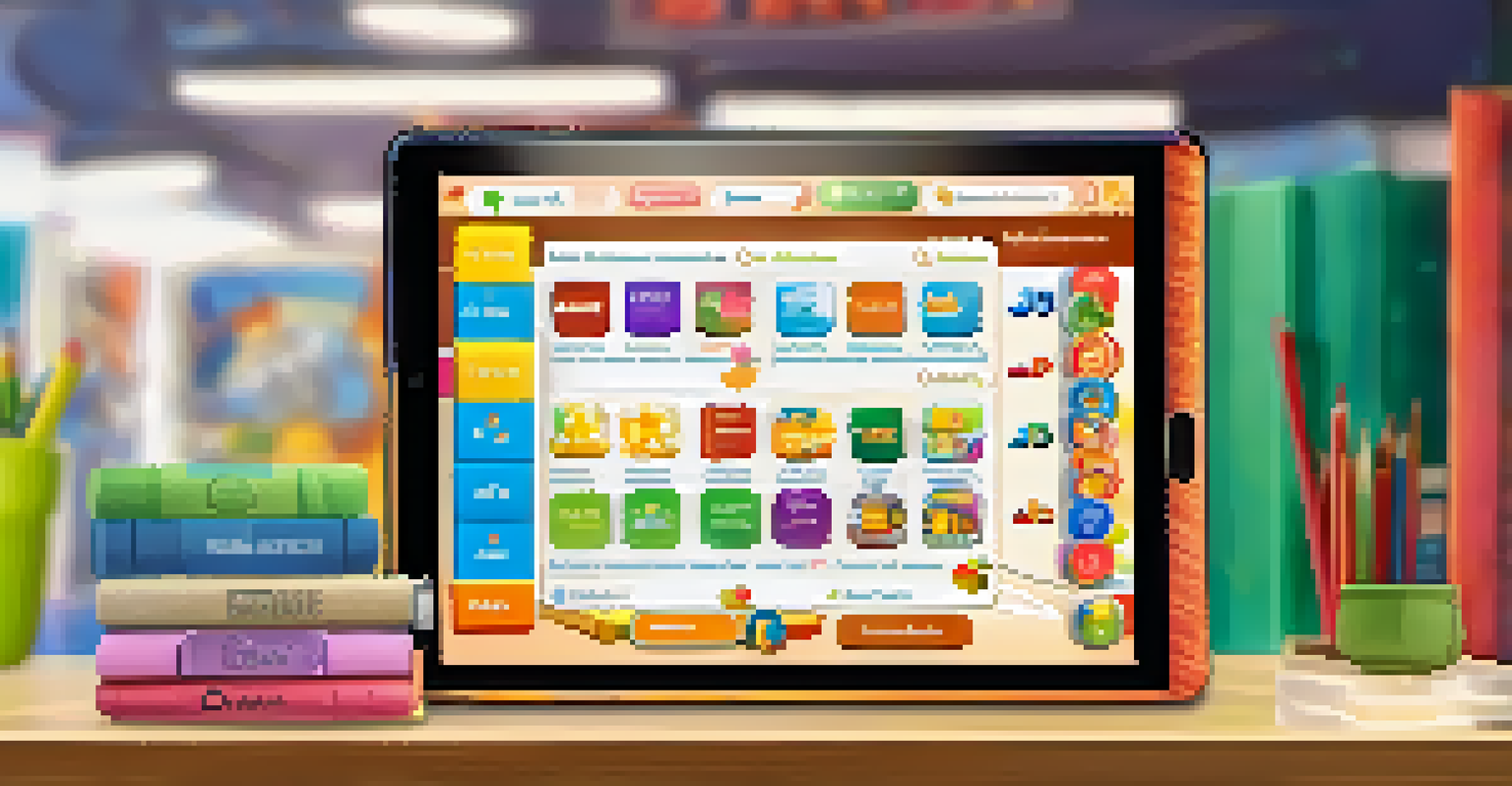Gamification and Personalized Learning: A Perfect Match

Understanding Gamification: More Than Just Fun
Gamification refers to the application of game elements in non-game contexts, aiming to enhance user engagement. It can be as simple as using points or badges to reward achievements or as complex as creating immersive game-like environments. Essentially, it's about making learning more enjoyable and motivating.
Gamification is the use of game elements in non-game contexts to engage users and solve problems.
By incorporating elements like challenges, scores, and rewards, gamification taps into our natural desire for achievement and competition. This can transform mundane tasks into exciting challenges, leading to increased participation and enthusiasm. For learners, this means staying engaged longer and enjoying the process.
However, gamification isn't just about fun; it also serves a strategic purpose. By integrating game mechanics into learning, educators can better capture attention and provide instant feedback, which is crucial for effective learning. In short, gamification sets the stage for a more interactive educational experience.
Personalized Learning: Tailoring Education to Individual Needs
Personalized learning focuses on tailoring education to fit individual students' needs, preferences, and interests. This approach recognizes that each learner is unique and may require different strategies to succeed. By customizing learning paths, educators can ensure that each student receives the support they need.

Unlike traditional one-size-fits-all education, personalized learning allows for flexibility. Learners can progress at their own pace, choosing topics that interest them and engaging with materials in a way that resonates. This adaptability not only fosters a deeper understanding but also enhances motivation.
Gamification Boosts Engagement
Gamification applies game elements to make learning enjoyable and motivating, transforming mundane tasks into exciting challenges.
At its core, personalized learning aims to empower students by putting them in control of their educational journey. With the right tools and approaches, learners can take charge of their progress, setting goals and reflecting on their achievements. This sense of ownership is crucial for fostering lifelong learning.
How Gamification Enhances Personalized Learning Experiences
Gamification and personalized learning complement each other beautifully, creating an engaging learning environment. By incorporating game-like elements into personalized paths, students can experience a sense of adventure while mastering new skills. This combination not only makes learning enjoyable but also enhances retention and comprehension.
Personalization is not just about tailoring content; it’s about creating a learner-centered environment that fosters engagement and motivation.
For instance, when learners complete personalized quests or challenges, they receive immediate feedback through points or badges. This instant recognition fuels their motivation and encourages them to tackle more complex concepts. The result is a dynamic learning experience that captures interest and drives achievement.
Moreover, gamification can adapt to individual learning styles. Whether a student thrives on competition, collaboration, or self-paced challenges, gamified systems can cater to these preferences. This adaptability ensures that all learners feel valued and engaged, paving the way for meaningful educational experiences.
Creating a Gamified Personalized Learning Environment
To effectively blend gamification with personalized learning, educators need to design an environment that supports both elements. This starts with understanding the unique preferences and needs of each learner. Gathering data on student performance and engagement can inform the creation of tailored experiences.
Once the data is collected, it’s essential to integrate gamified elements that resonate with the learners. This could include creating levels, challenges, or rewards that align with their interests and learning goals. By doing so, educators can create a space where students feel both challenged and supported.
Personalized Learning Empowers Students
By tailoring education to individual needs, personalized learning helps students take control of their educational journey and fosters lifelong learning.
Additionally, ongoing evaluation is key. As students progress, their needs may change, and the gamified experience should evolve accordingly. Regularly updating challenges and rewards ensures that learners remain motivated and engaged, making the educational journey both fun and effective.
Real-World Examples of Gamification in Personalized Learning
Numerous educational platforms have successfully integrated gamification into personalized learning. For example, platforms like Kahoot! and Quizizz allow educators to create interactive quizzes that cater to individual learning levels while maintaining a competitive edge. This brings excitement to learning and encourages students to actively participate.
Another notable example is Duolingo, a language-learning app that gamifies the process with levels, streaks, and rewards. Users can personalize their learning journey by selecting topics of interest and setting daily goals, all while enjoying a game-like experience. This approach not only enhances engagement but also ensures consistent progress.
These examples illustrate the potential of combining gamification with personalized learning. By taking cues from gaming, educators can create learning experiences that are not only effective but also incredibly engaging, leading to better outcomes for students.
Challenges of Integrating Gamification in Education
While the benefits of gamification in personalized learning are clear, there are challenges to consider. One primary concern is the risk of focusing too much on rewards, which could lead to superficial learning. If students are primarily motivated by points or badges, they may neglect the intrinsic value of the material.
Furthermore, not all learners respond positively to gamified elements. Some may feel overwhelmed by competition, while others may prefer a more traditional approach to learning. Striking the right balance is crucial to ensure that all students feel included and supported in their educational journeys.
Combining Gamification with Personalization
Integrating gamification into personalized learning creates dynamic environments that cater to diverse learning styles and enhance retention.
Lastly, educators must be adequately trained to implement gamification strategies effectively. Understanding how to create engaging content and assess student progress in a gamified environment requires skill and knowledge. Continuous professional development is essential to overcome these obstacles and maximize the potential of gamification.
The Future of Gamification and Personalized Learning
Looking ahead, the integration of gamification in personalized learning is likely to continue evolving. As technology advances, new tools and platforms will emerge, making it easier to create engaging, personalized experiences. This could lead to even more innovative approaches that cater to diverse learning styles and preferences.
Moreover, data analytics will play a significant role in shaping these experiences. By harnessing data, educators can gain insights into student performance and engagement, enabling them to refine their gamified content continuously. This responsiveness will be key to creating a truly personalized learning environment.

Ultimately, the future of education lies in embracing these innovative approaches. By marrying gamification with personalized learning, we can create experiences that not only educate but also inspire students to take charge of their learning journeys. The possibilities are limitless, and the benefits are clear.